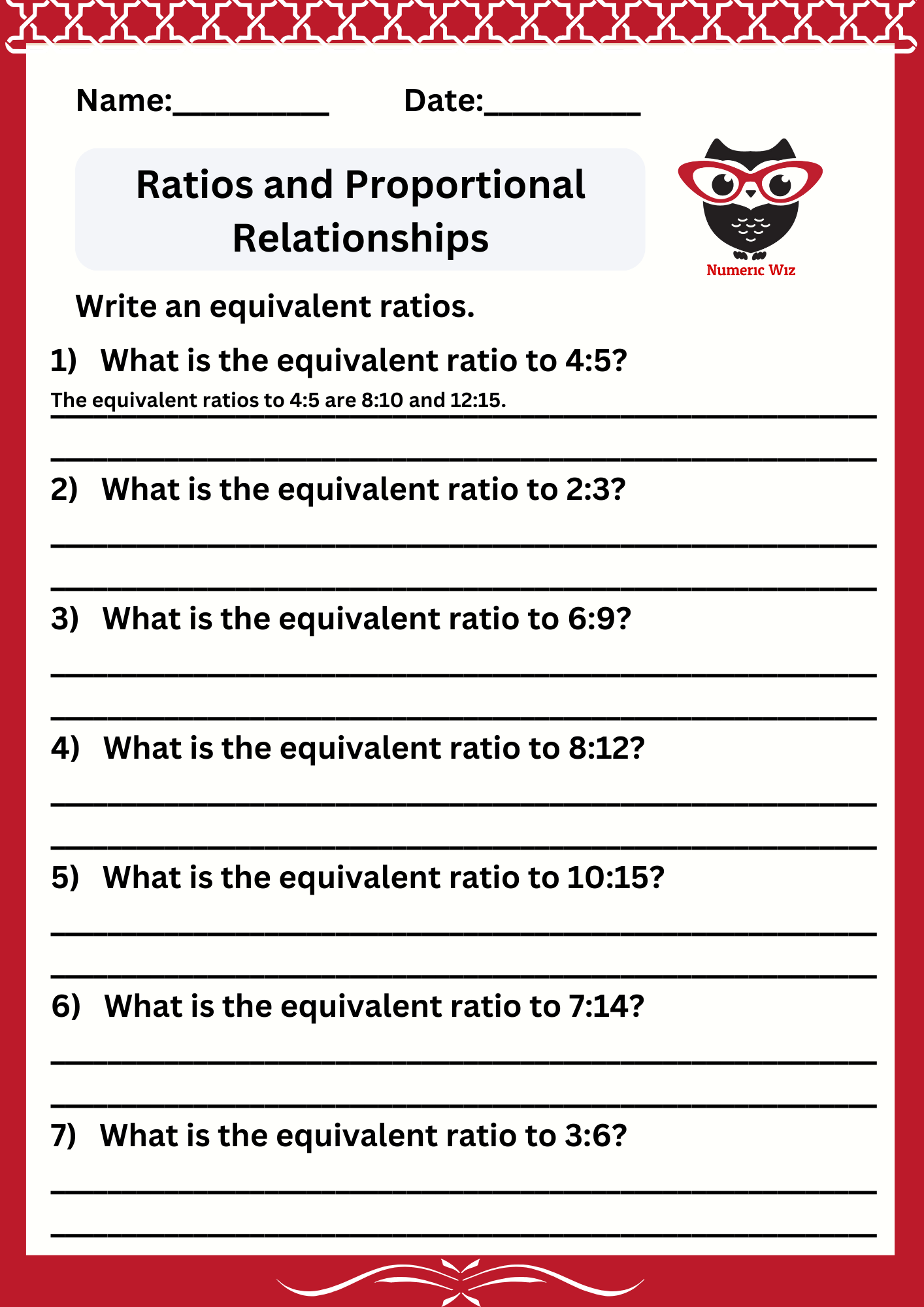

Equivalent ratios are fundamental in understanding proportional relationships, a concept widely used in real-life scenarios like cooking, shopping, and problem-solving in mathematics. Writing equivalent ratios involves creating new ratios that express the same relationship between quantities as the original ratio. Let’s dive into this concept and explore how to identify, write, and use equivalent ratios effectively.
Equivalent ratios are ratios that have the same value or describe the same relationship between two quantities, even though the numbers may differ. They are created by multiplying or dividing both terms of a ratio by the same non-zero number.
For the ratio 2:3:
Multiply both terms by 2:
2×2:3×2=4:6
Multiply both terms by 5:
2×5:3×5=10:15
Divide both terms by 1 (no change):
2÷1:3÷1=2:3
Resulting equivalent ratios:
2:3 , 4:6 , 10:15

Multiply by 3:
4×3:5×3=12:15
Divide by 2:
4÷2:5÷2=2:2.5 (if fractional ratios are acceptable).
Verify Proportionality
Check that the simplified form of the new ratio matches the original ratio.
Understanding and writing equivalent ratios helps in:
By mastering how to write equivalent ratios, you unlock the ability to solve complex problems with ease. Whether using tables, graphs, or simple arithmetic, equivalent ratios simplify and clarify proportional relationships in both math and everyday life!
Let’s explore and enhance your skills in writing equivalent ratios together!
For a limited time
